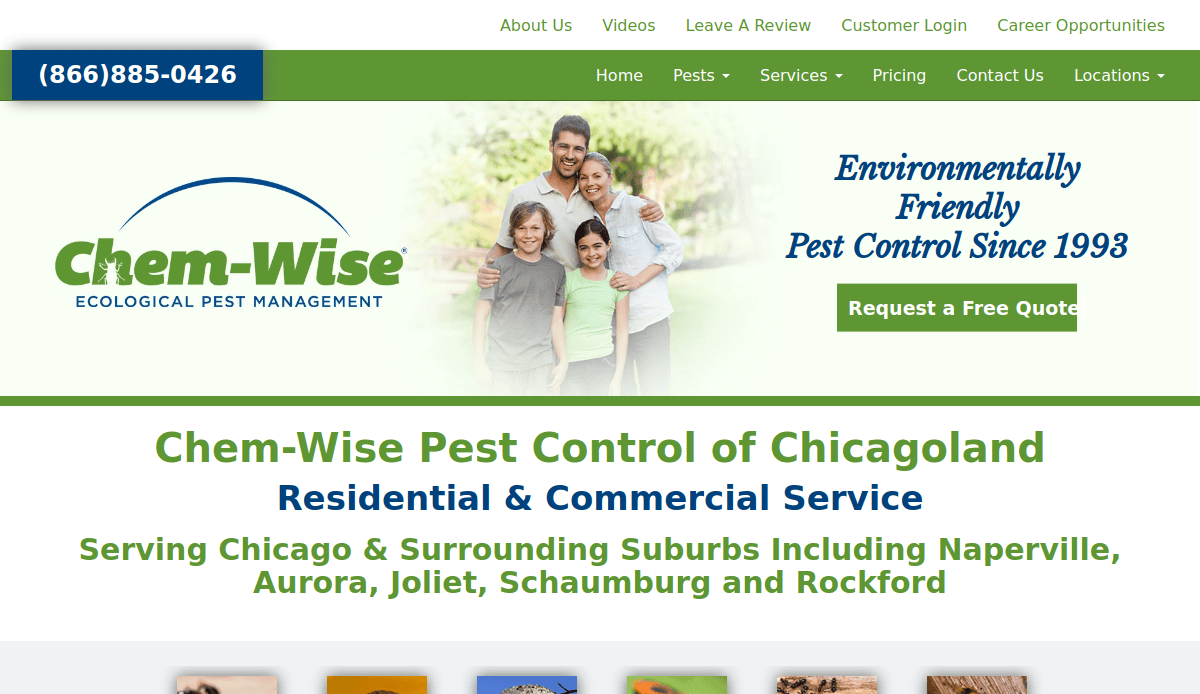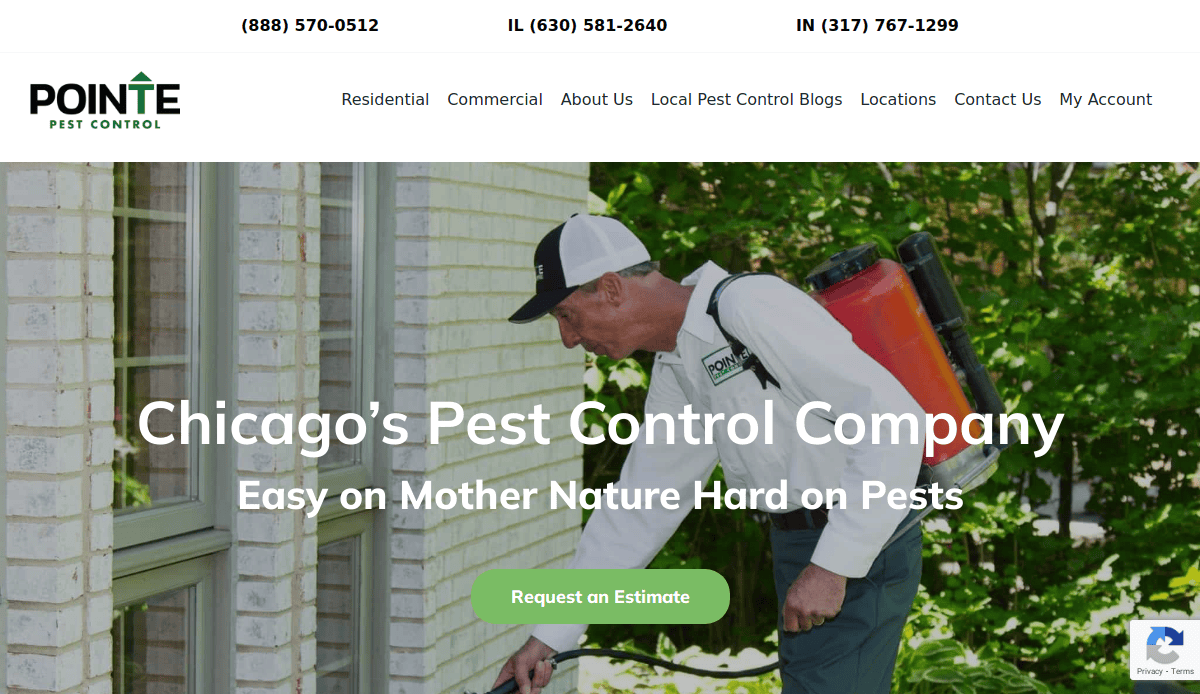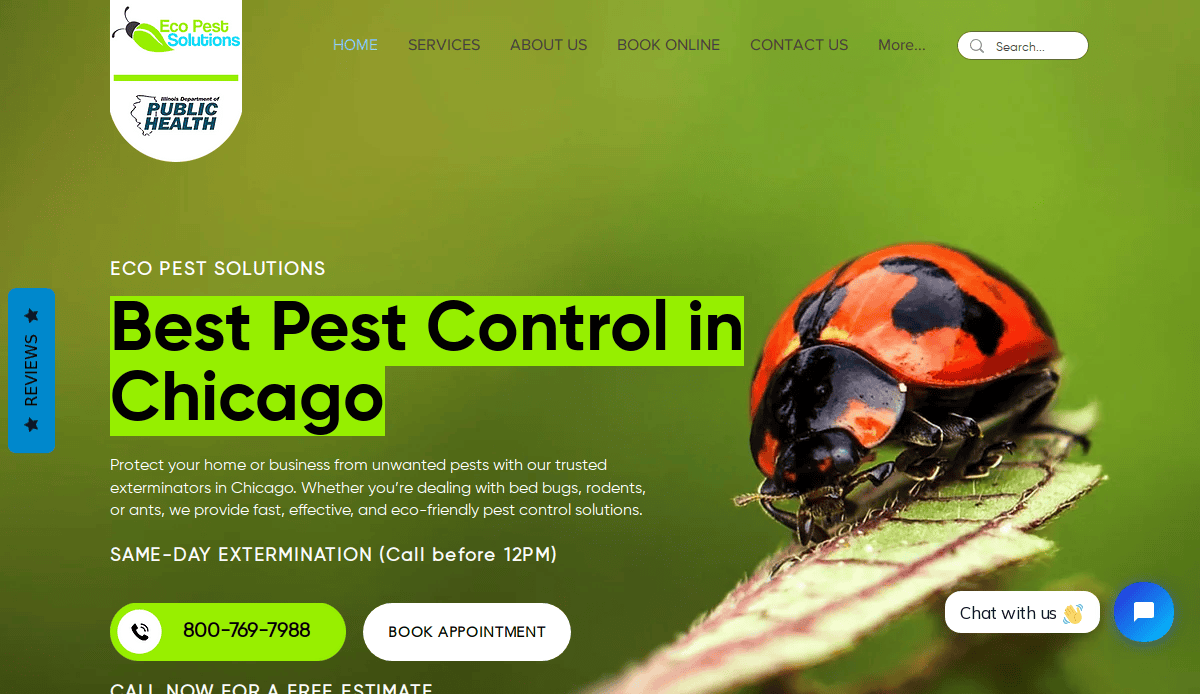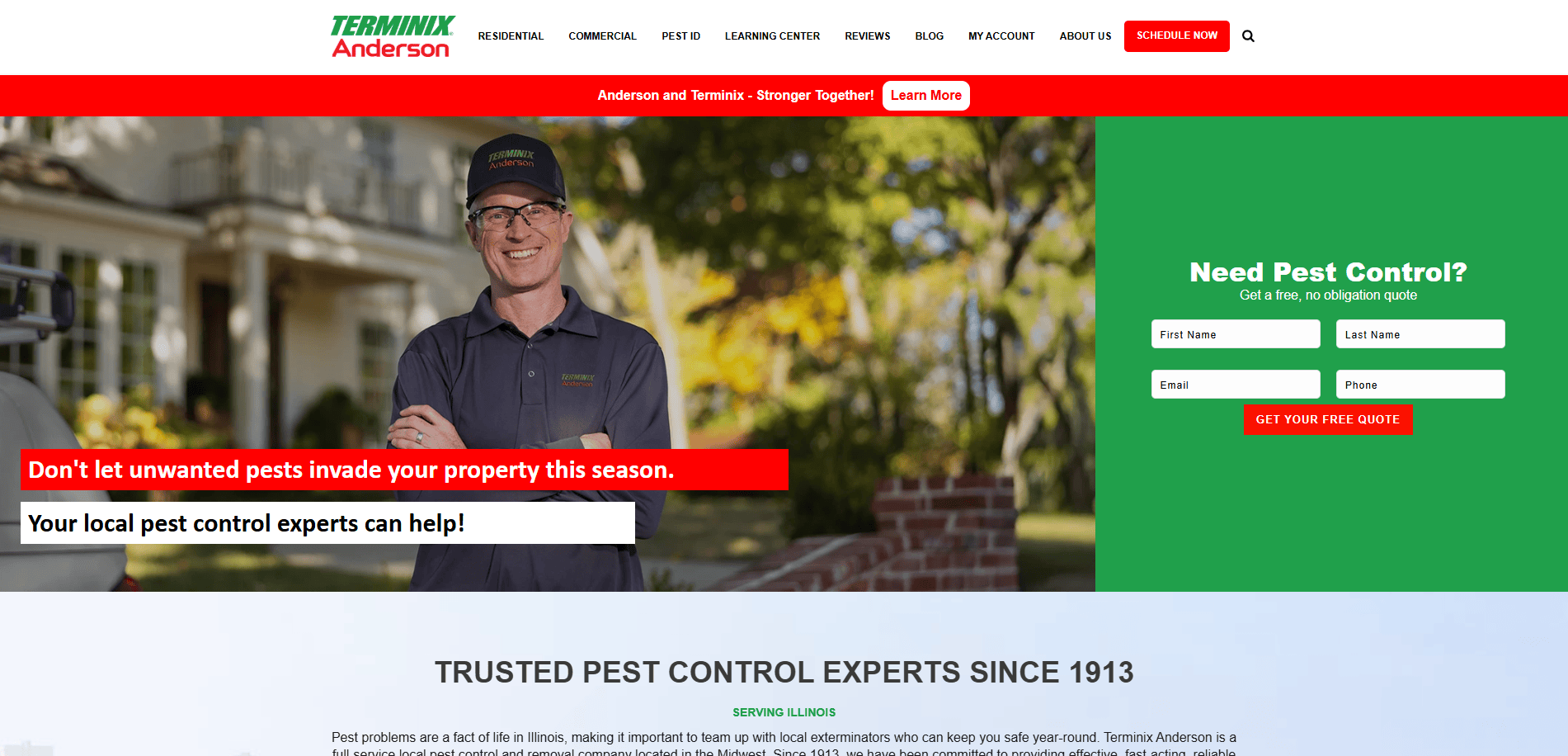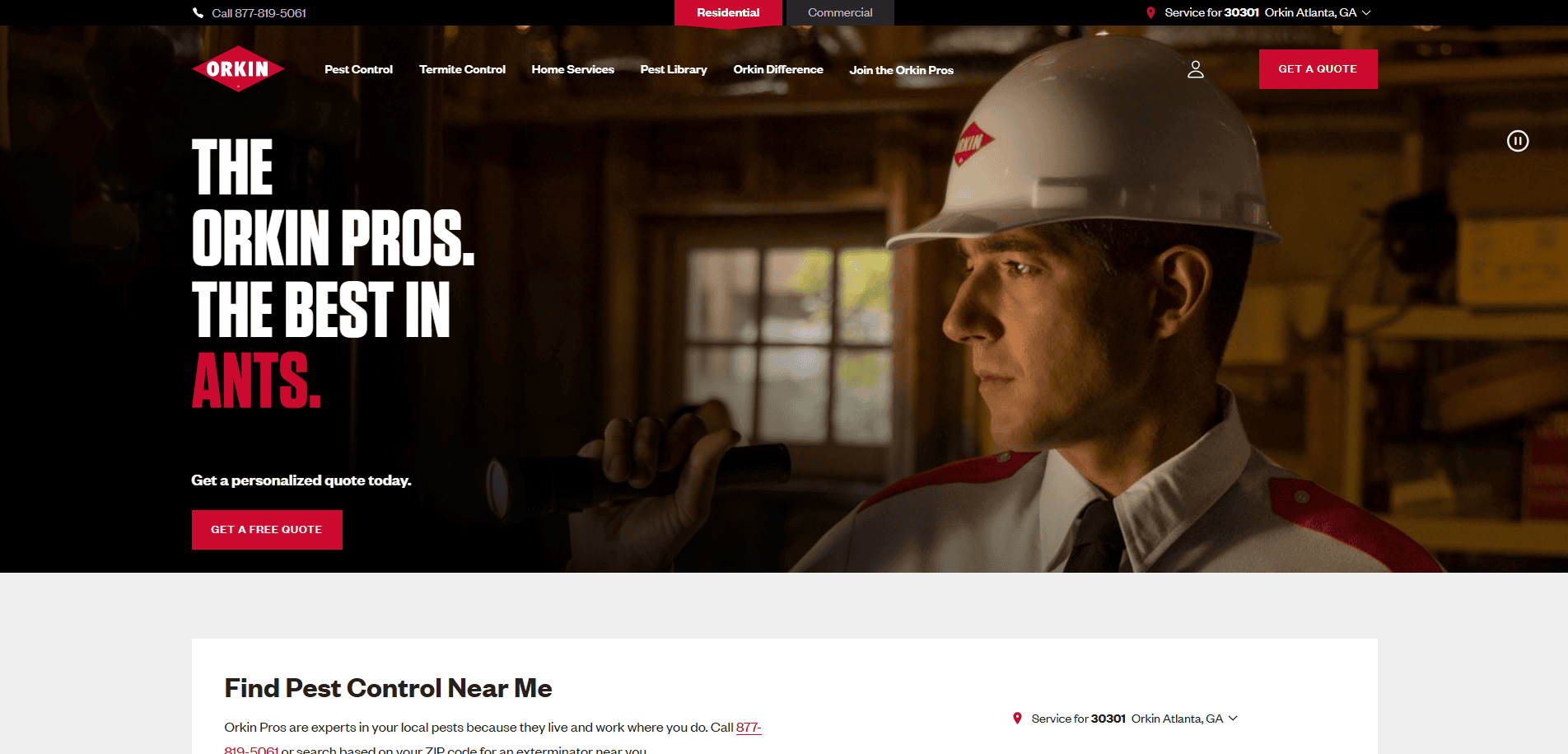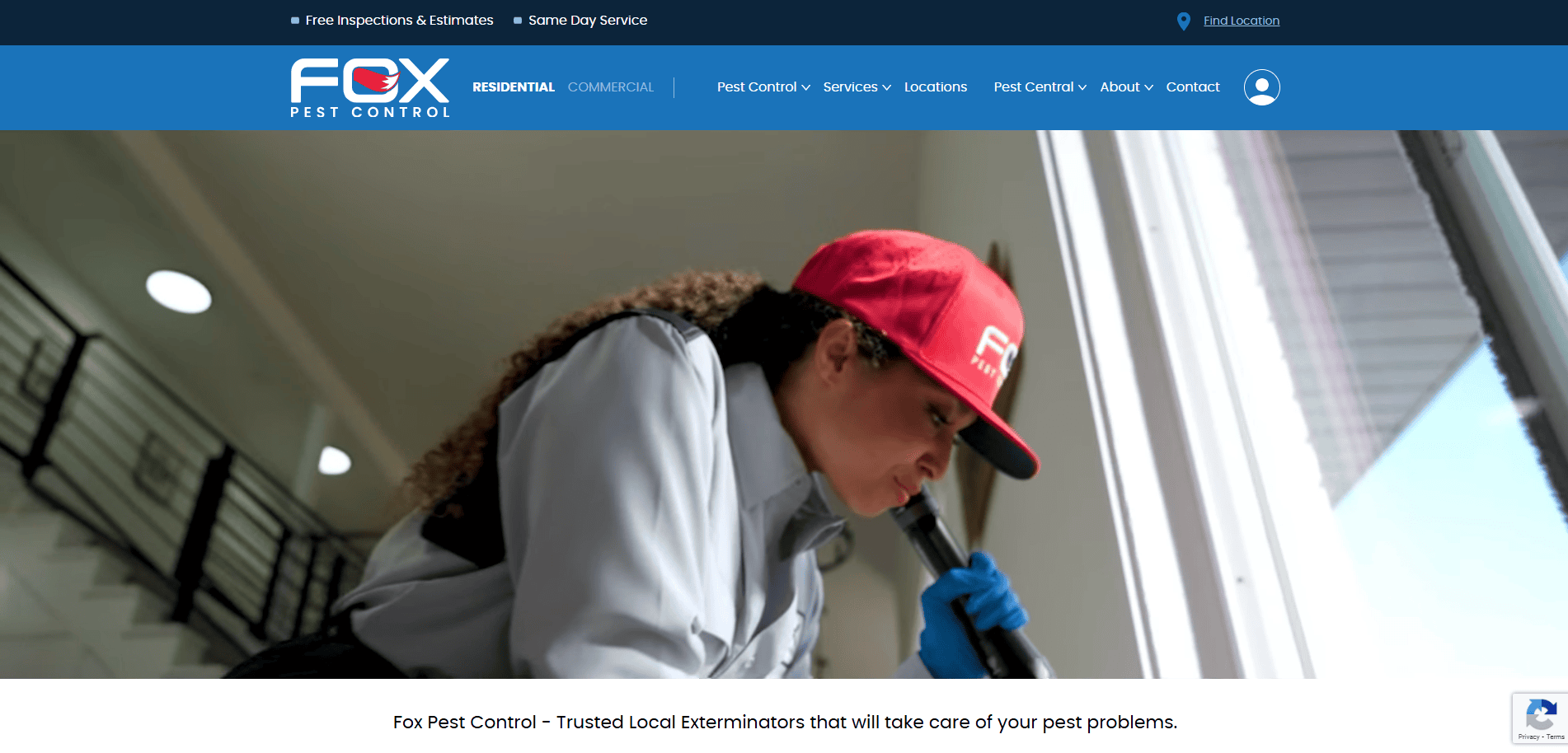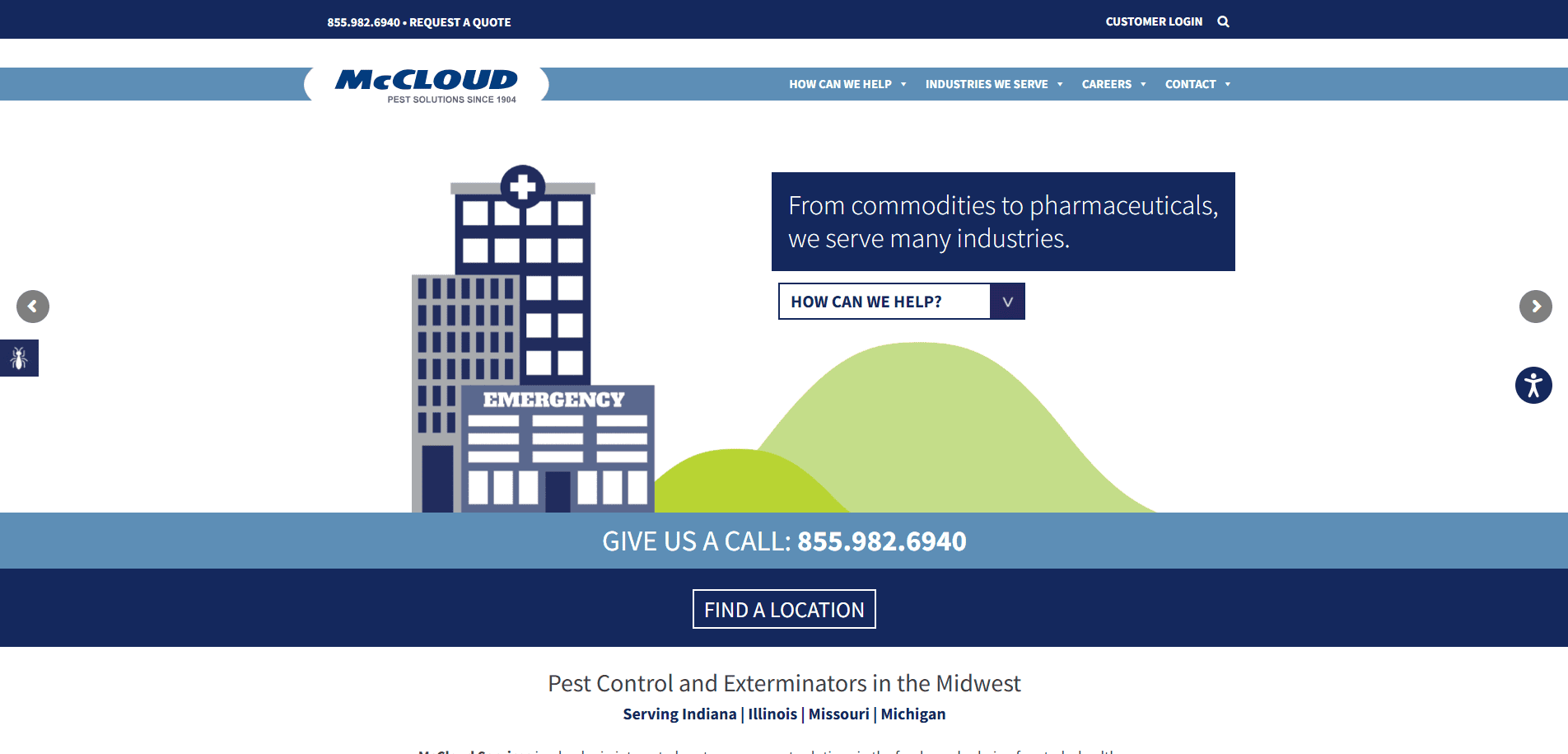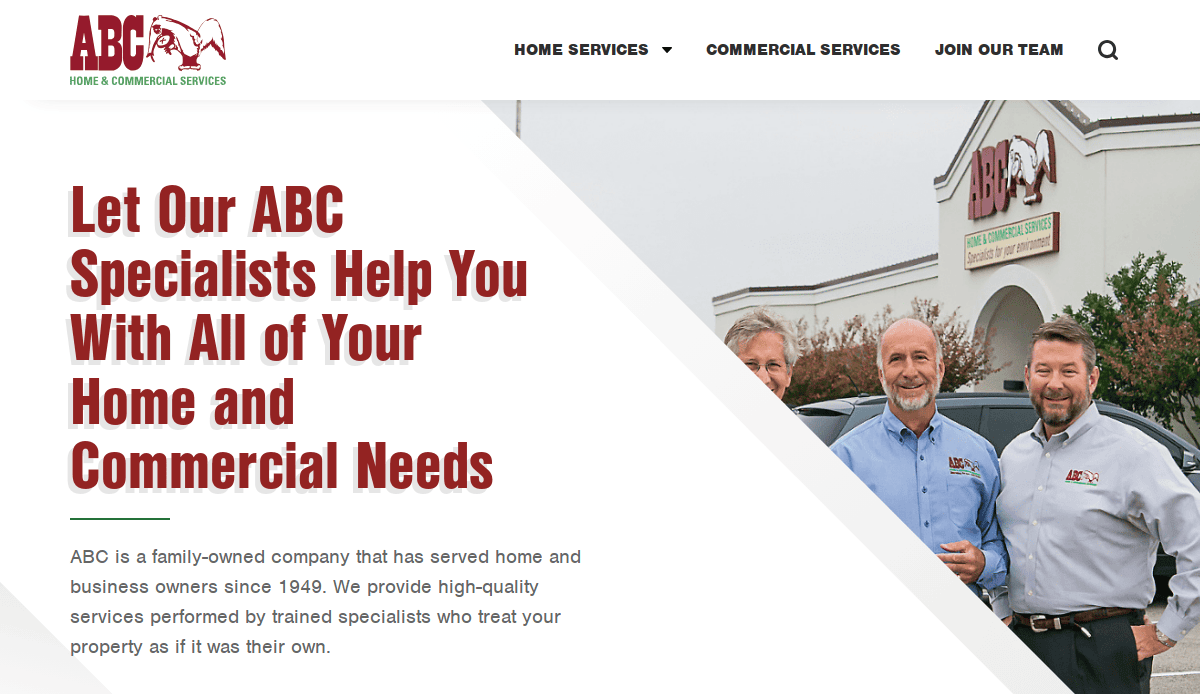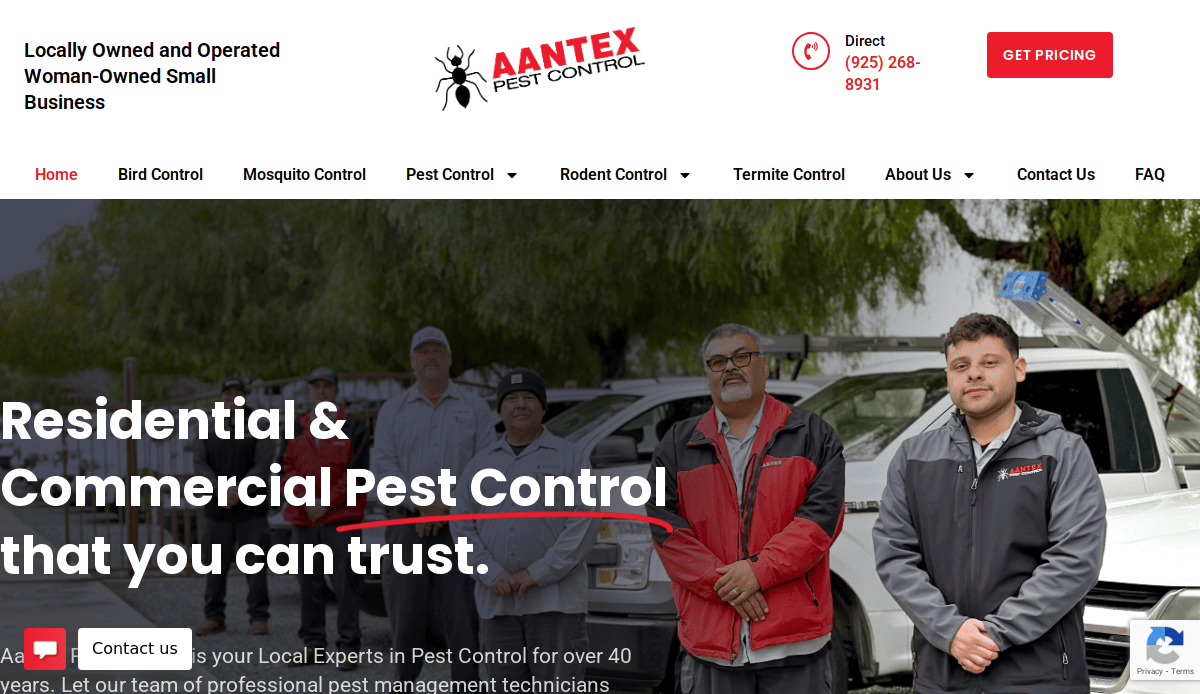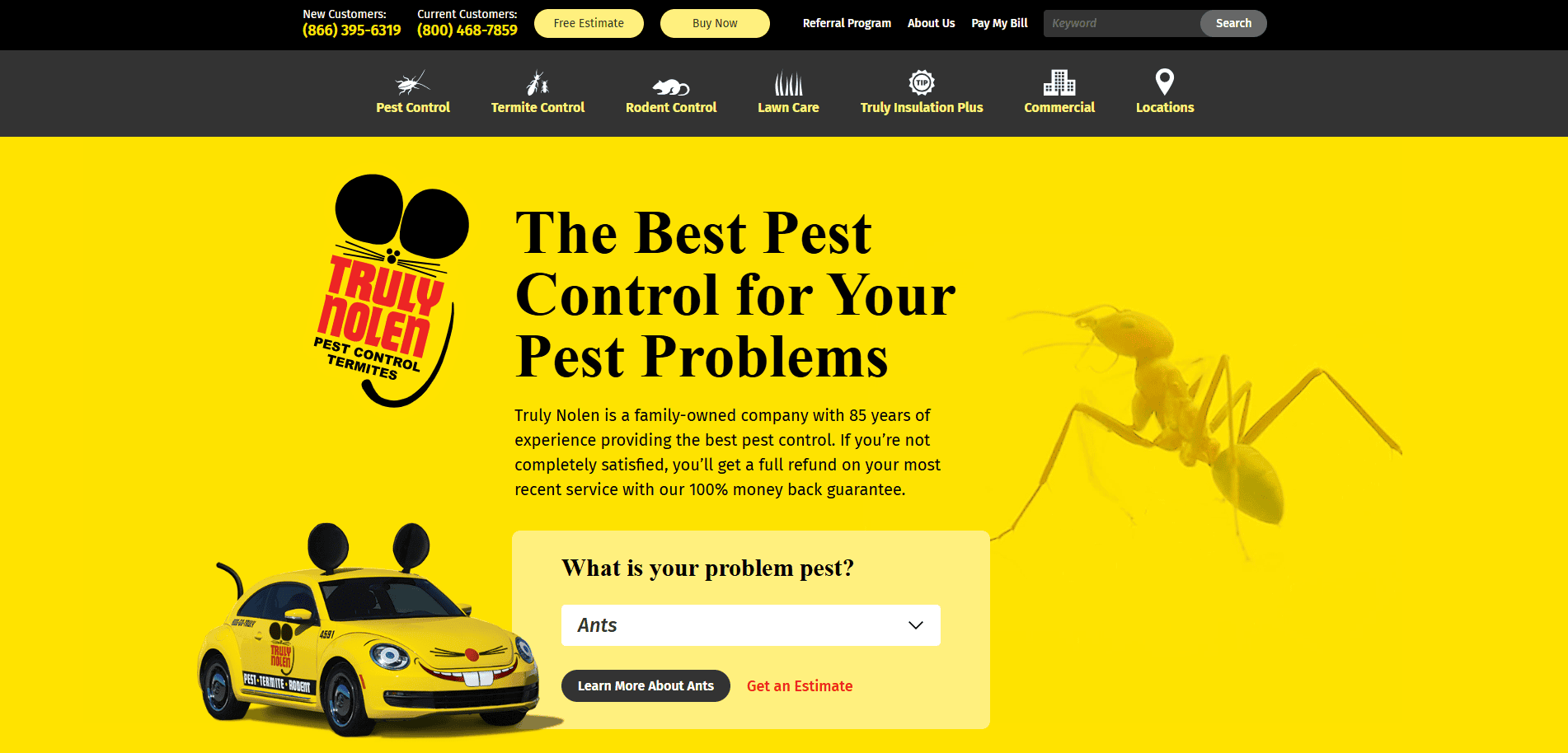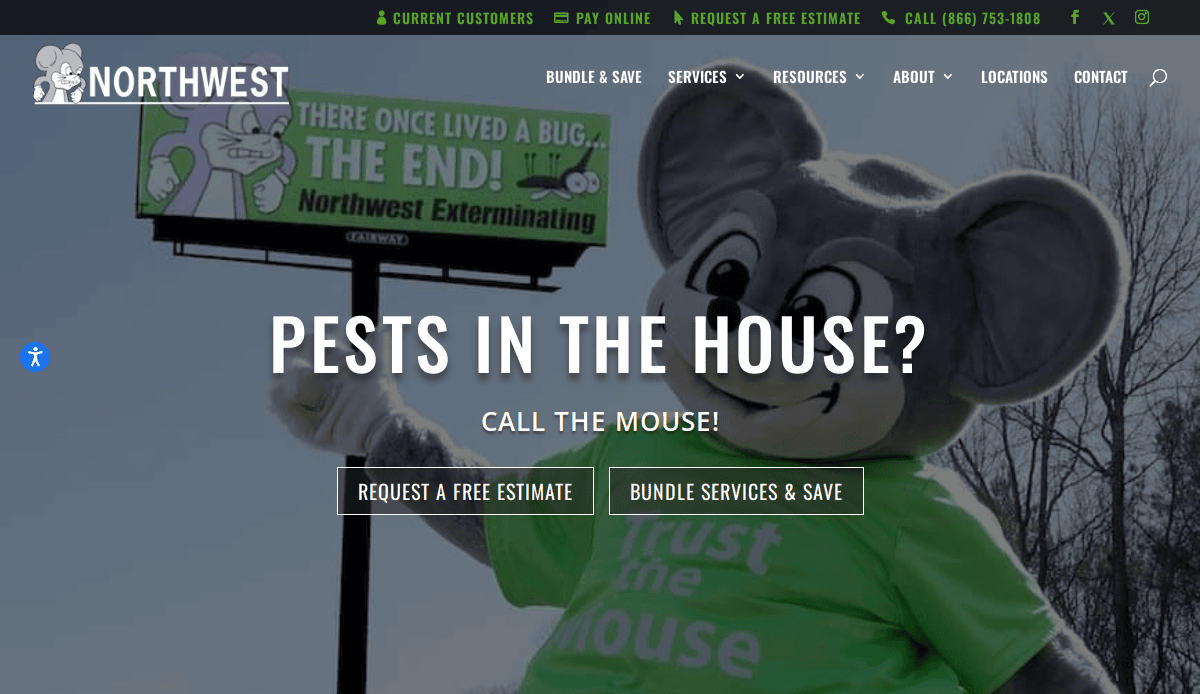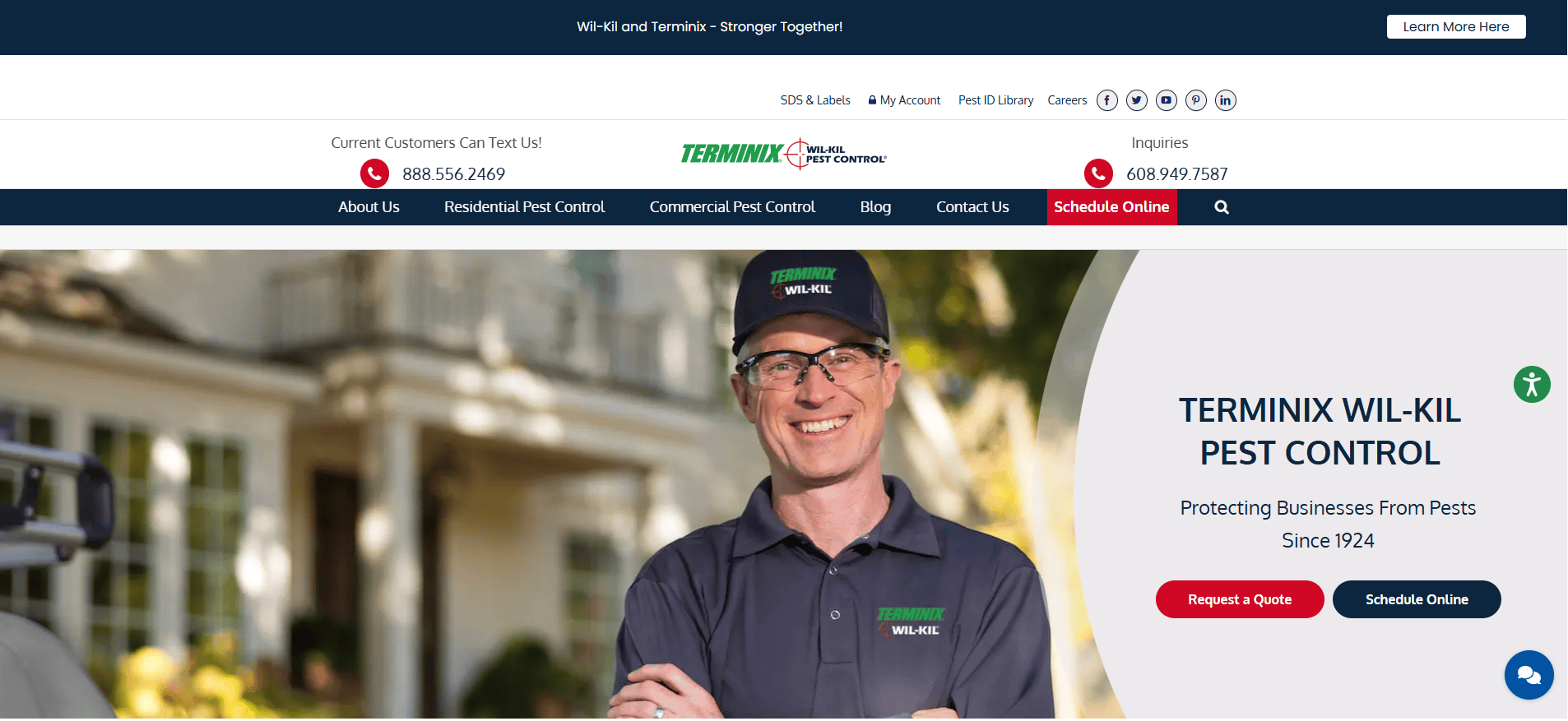Just looking for our Best Pest Control Website examples list?
Key Takeaways
- A Professional Website Builds Instant Trust: Pest control businesses need a clean, modern, and user-friendly website to stand out in a competitive market. First impressions matter, and a professional design signals credibility and reliability.
- Mobile Optimization is Non-Negotiable: Most users search for pest control services on their smartphones. A responsive, mobile-first design ensures your site is accessible, fast-loading, and easy to navigate on all devices, directly impacting lead conversion.
- SEO Strategy Drives Local Visibility: Implementing local SEO, like keyword-rich service pages, optimized meta tags, and Google Business integration, helps your pest control company appear at the top of search results when customers look for services in their area.
- Clear CTAs Turn Visitors Into Leads: Your website should guide users with strategically placed calls-to-action (CTAs), such as “Get a Free Quote” or “Schedule an Inspection,” to drive engagement and capture leads.
- Content Must Solve Problems: Include service-specific pages, pest education resources, FAQs, and blog posts that address common pest issues. Educational content builds authority and keeps visitors engaged longer.
- Visuals and Testimonials Build Credibility: Use high-quality imagery, real customer reviews, and trust badges to reinforce your expertise and establish social proof that builds customer confidence.
- Fast Load Times and Secure Hosting Matter: Site speed and SSL certificates aren’t just technical details—they influence rankings and customer trust. Make sure your site is optimized for both speed and security.
- Track, Analyze, and Improve: Use analytics tools to monitor user behavior, conversion rates, and bounce rates. Continuously optimize your website based on performance data to improve results.
Why Great Pest Control Website Design Matters
Your website isn’t just a digital business card—it’s the heart of your company’s online presence. In an industry built on trust and prompt service, first impressions can make or break a sale. When a potential customer lands on your website, they’re looking for reassurance that your team is professional, experienced, and capable of solving their pest problem fast.
That reassurance starts with great design. A modern, clean, and responsive website instantly communicates credibility and builds confidence. But beyond the aesthetics, an effective site does much more. It guides visitors toward taking action—calling for an inspection, requesting a quote, or reading about your process. It’s built to rank well in search engines, load quickly on any device, and deliver a seamless user experience that keeps visitors engaged.
In this guide, we’ll break down the most important aspects of website design for the pest control industry—from foundational elements to conversion strategies—so you can build a site that looks good and drives real business results.
Website Planning & Purpose
Before any code is written or designs are created, effective web design starts with strategic planning. This phase ensures the website is aligned with business objectives and customer expectations. In pest control, the stakes are high: potential customers often visit a website when they’re actively seeking a fast, reliable solution. The planning phase ensures the site speaks directly to that urgency and trust requirement.
The first step is identifying the primary goals of the website. For most pest control businesses, this includes generating leads through contact forms and calls, educating site visitors about pest problems and services, and showcasing customer testimonials to build trust. Planning the content hierarchy—what pages to include and how they relate to each other—is critical. A typical structure might include: Home, About Us, Services, Service Areas, Testimonials, Blog, and Contact.
Next, it’s essential to define the target audience and their behaviors. Are visitors homeowners dealing with seasonal pests? Are they property managers needing long-term contracts? Understanding the audience guides decisions around language, visuals, and calls-to-action.
Finally, competitive analysis plays a big role. Reviewing the websites of top pest control providers helps identify gaps and opportunities. This is the moment to determine how your site can stand out—whether by highlighting emergency services, including pest ID guides, or offering instant quote tools.
The planning phase builds the foundation for a successful website by aligning business strategy with customer needs, ensuring the site is structured for performance, and setting the tone for design and messaging that converts visitors into leads.
Content & Navigation
Content and navigation are the backbone of a successful site. They determine how easily visitors can find information, understand your offerings, and take action. A well-structured content strategy paired with intuitive navigation creates a seamless experience that keeps users engaged and moving through your site.
Start by organizing content around your core services. Each pest control service—whether it’s termite control, rodent removal, or mosquito treatments—should have its own dedicated page. These service pages must include clear descriptions, target keywords for SEO, and calls-to-action tailored to that service. Use FAQ sections and visual aids like pest identification images to enhance understanding and boost credibility.
Supporting content such as blogs, seasonal pest guides, and educational resources should be structured to answer common questions and attract long-tail search traffic. This builds trust and helps improve organic visibility.
Navigation should be clean and intuitive. Keep the primary menu simple: Home, Services, About, Service Areas, Blog, Contact. Drop-downs can be used for specific services if necessary, but avoid overloading menus with too many links. Include sticky or top navigation bars on mobile to improve accessibility.
Incorporate internal linking across pages. For instance, your “Rodent Control” page can link to blog posts about rodent prevention or to your FAQ page. This supports SEO while guiding users to explore more content.
A clear user path is essential. Visitors should never have to dig for information or wonder what to do next. Use buttons like “Schedule a Free Inspection” or “Find Services in Your Area” at strategic points. Every piece of content should support the visitor journey from awareness to conversion.
Ultimately, content and navigation must work together to educate, inform, and convert. This means delivering the right message, at the right time, in the most accessible way possible.
Visual Elements
Visual design plays a crucial role in shaping how visitors perceive and interact with a website. It reinforces the brand identity, instills trust, and guides users seamlessly through the site. For pest control companies, where credibility and reliability are non-negotiable, every visual element must serve a purpose.
The first component is imagery. Use professional, high-resolution photos that represent your services clearly and authentically. Avoid generic stock images—whenever possible, showcase your actual team in the field, branded vehicles, and customer service interactions. These visuals help humanize your brand and build trust.
Color schemes should reflect cleanliness, safety, and professionalism. Many pest control companies benefit from a palette of greens, blues, or neutrals, which convey calmness and control. Avoid harsh or overly bright tones that may overwhelm users or clash with brand consistency.
Typography must be legible and consistent. Choose a primary typeface that is easy to read across devices, and limit the number of font styles used to maintain cohesion. Headings should be bold and distinct to help guide the reader’s eye, while body text should be clean and approachable.
Icons and graphics should support content without cluttering the page. Use them to illustrate key services, represent types of pests, or break up long text blocks. Infographics that explain pest behavior or treatment processes can be especially helpful in educating and retaining visitors.
Whitespace is another vital design element. Proper spacing between sections and elements allows the content to breathe and makes the site easier to navigate. A clutter-free layout enhances readability and directs attention to the most important elements, such as CTAs.
Trust badges and testimonials should be visually highlighted. Include logos of certifications, associations, and positive customer reviews in prominent areas to reinforce your authority and social proof.
A successful visual design does more than make a site attractive—it enhances the user experience, supports brand consistency, and builds the confidence that turns a visitor into a lead. Clarity, professionalism, and trust must be visually communicated on every page.
Ongoing WordPress Maintenance
Once a website is launched, the job isn’t finished. Regular WordPress maintenance is essential to ensure ongoing performance, security, and functionality. Without proactive upkeep, the site can become vulnerable to cyber threats, performance issues, and compatibility errors.
Routine updates are critical. WordPress core, theme, and plugin updates help patch security vulnerabilities and make sure your website continues to function with the latest web technologies. Outdated components pose risks and may also cause sections of your website to break or slow down.
Security monitoring is another top priority. Professional websites often collect customer information through contact forms and quote requests, making them targets for spam and malicious attacks. Implementing firewalls, malware scanning, and automated backups helps protect both your business and your customers’ data.
Site speed and uptime should also be consistently monitored. Regular performance checks, image optimization, and database cleanups guarantee your website loads quickly and runs smoothly, which directly impacts search rankings and user satisfaction.
Maintenance includes more than just technical updates—it also involves reviewing content accuracy and functionality. Service offerings, pricing, and contact information should be reviewed periodically to ensure accuracy. Broken links, outdated blog posts, and expired promotions need to be addressed to maintain credibility.
A proper maintenance plan ensures your website remains a reliable tool for attracting and converting customers. Partnering with a professional web agency can ensure that updates, security, and performance enhancements are handled efficiently, letting you focus on running your business.
20 Pest Control Web Design Examples
Here are 20 of the best pest control websites, including five designed by us. Each example showcases effective design strategies, clear user pathways, and a commitment to customer experience.
1. Smithereen Pest Management
Location: Chicago, IL
Key Takeaways:
- Clean, modern layout with professional visuals
- Strong service-specific CTAs on every page
- Clear navigation for residential and commercial solutions
2. Chem-Wise Pest Control
Location: Aurora, IL
Key Takeaways:
- Streamlined design that emphasizes service areas
- Engaging use of testimonials and visual proof
- Mobile-optimized with clear CTAs
3. Rose Pest Solutions
Location: Troy, MI
Key Takeaways:
- Interactive pest library for user education
- Accessible appointment scheduling
- Clean branding and cohesive color scheme
4. Pointe Pest Control
Location: Chicago, IL
Key Takeaways:
- Prominent call-to-action buttons
- Effective use of iconography
- Balanced white space and mobile responsiveness
5. Eco Pest Solutions
Location: Chicago, IL
Key Takeaways:
- Clear segmentation of services
- SEO-optimized content and service pages
- Eco-friendly messaging backed by visuals
6. Aptive Environmental
Location: Provo, UT
Key Takeaways:
- Bold imagery and minimalistic design
- High-converting lead form on the homepage
- Scroll-friendly mobile UX
7. Anderson Pest Solutions
Location: Elmhurst, IL
Key Takeaways:
- Trust-focused design with credentials and awards
- Educational blog content for SEO
- Local targeting and map integrations
8. Orkin
Location: Atlanta, GA
Key Takeaways:
- Strong national brand presence
- Advanced pest library and resources
- Instant quote and scheduling tools
9. Fox Pest Control
Location: Logan, UT
Key Takeaways:
- Focus on local branches and service areas
- Testimonial carousel to build trust
- Clean site structure with visual hierarchy
10. McCloud Services
Location: South Elgin, IL
Key Takeaways:
- Emphasis on commercial pest control expertise
- Downloadable guides and PDFs
- Effective use of imagery to reinforce trust
11. Terminix
Location: Memphis, TN
Key Takeaways:
- National SEO structure with local optimization
- Quick quote request process
- High-contrast CTAs and accessibility features
12. HomeTeam Pest Defense
Location: Dallas, TX
Key Takeaways:
- Bright, approachable design with service icons
- Effective homepage video banner
- Lead-gen tools and live chat
13. ABC Home & Commercial Services
Location: Austin, TX
Key Takeaways:
- Multiservice segmentation for broader appeal
- Clear branding and family-focused tone
- Educational blog with strong SEO
14. Aantex Pest Control Norcal
Location: Concord, CA
Key Takeaways:
- Simple homepage layout with quick links
- Scroll-triggered animations and service highlights
- Emphasis on local services and testimonials
15. Plunkett’s Pest Control
Location: Fridley, MN
Key Takeaways:
- Clean navigation and structured content
- Detailed pest control tips and blog posts
- Easy-to-access quote form
16. Guardian Pest Solutions
Location: Superior, WI
Key Takeaways:
- Industrial/commercial focus with bold design
- Minimalist layout that highlights service strength
- Branded visual identity and CTA placement
17. Truly Nolen
Location: Tucson, AZ
Key Takeaways:
- Eye-catching branding with a yellow/black theme
- Family-owned feel with national reach
- Seasonal promotions and booking tools
18. Blue Beetle Pest Control
Location: Kansas City, MO
Key Takeaways:
- Colorful and memorable branding
- Trust-building copy and service transparency
- Smooth navigation and mobile UI
19. Northwest Exterminating
Location: Marietta, GA
Key Takeaways:
- Professional pest control feels with soft visuals
- Customer resources and pest library
- Social proof and real-time reviews
20. Wil-Kil Pest Control
Location: Sun Prairie, WI
Key Takeaways:
- Educational approach with strong SEO presence
- Industry certifications and safety focus
- Simple, effective design services execution
Ready to Build a Website That Works?
As a business owner in the pest control industry, you understand how critical it is to earn trust quickly and provide solutions fast. Your website is your most powerful tool to engage visitors, promote your local service, and stand out from the competition.
Whether you’re starting fresh or replacing an outdated theme, our expert web design team is here to guide your success. We combine user-focused strategy with clean visuals, optimized content, and technical precision tailored to the pest control market.
Work with a professional web designer who knows your industry and understands how to turn online traffic into leads.
Get a free consultation with us and let’s design a pest control website that gets results.
Your Industry Web Design FAQs Answered
What makes a good website design?
A good website should feature responsive design, fast load times, user-friendly navigation, and compelling CTAs. It should also offer clear pest control solutions, professional visuals, and content that answers customer questions.
Should I use a template or invest in custom website design services?
While templates are quick and budget-friendly, a custom website designed by a professional pest control web design company like ours provides better branding, unique functionality, and long-term scalability.
What content should be included on my site?
Essential website content includes service descriptions by pest type, local service areas, testimonials, and educational resources like pest control tips. These elements help drive website traffic and improve engagement.
How can I make my industry website stand out from competitors?
Focus on user-friendly design, unique branding, and showcasing your local expertise. Highlight your differences and make your website content personal and region-specific to connect with local pest control clients.
How does SEO help grow your pest control business online?
By using keywords like “best pest control” and “professional pest control website” and implementing technical SEO, you improve visibility on Google. Strong SEO attracts more website visitors and qualified leads.
Can a digital marketing agency also handle my web design needs?
Yes, a digital marketing agency like ours offers web design services integrated with SEO and conversion strategy to ensure your website meets all your business goals.
Why is responsive and mobile-optimized website design important?
Most customers search on mobile devices. A mobile-optimized website ensures your site looks and functions perfectly across all screen sizes, which enhances user experience and reduces bounce rates.
How do I know which website features are most important?
Prioritize website features that meet your customers’ expectations: clear contact info, live chat, service pages, pest identification guides, and a blog with useful pest control methods and tips.
What’s involved in the website design process?
The process includes discovery, strategy, wireframing, content creation, design, development, and testing. Each stage ensures your designed website aligns with your pest control needs and customer expectations.
How can I get started designing a pest control website?
You can start by contacting a trusted pest control web design company, defining your website needs, and collaborating on a plan to build a website that attracts customers and supports business growth.


